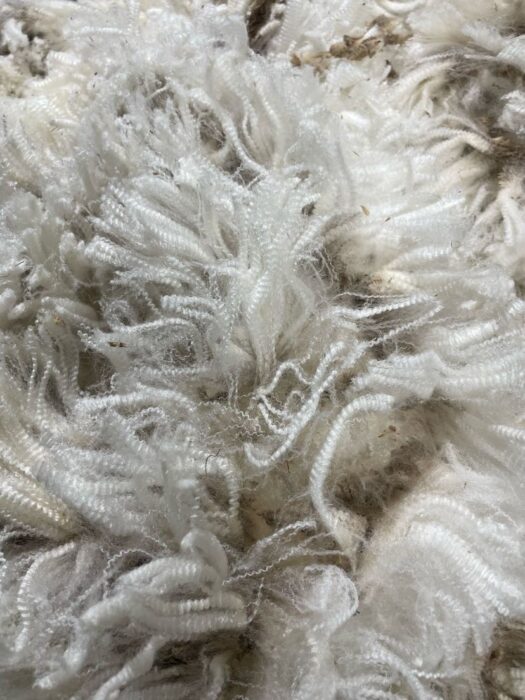
A Yarn about Wool
by Jamie Mitton| TuneFM Work300 Student
What’s Wool?
Wool is as “the fine, soft curly or wavy hair forming the coat of a sheep” which can be made into a yarn or textile fibre. As one of the world’s largest wool producers, Australia accounts for 25% of wool produced worldwide. Wool is, therefore, a large source of trade and income for Australia.
There are certain characteristics of woollen fleeces that are desirable and which also determine their use. These include: a defined deep and clear wavy pattern, known as a crimp, no tenderness, a consistent soft handle and bright white colour, cleanliness and micron.
Micron is the measurement of the diameter and fineness of the wool. Lower microns, such as 15, produce thinner and lighter fabrics, while higher microns of 25 are used for carpets. For reference, human hair is approximately 100 microns.
A Wardrobe Staple
Wool has a large variety of benefits that make it diverse and makes a wise choice of material for the textiles industry as well as the environment. Unfortunately, most of these benefits are overlooked or unknown and wool is, consequently, unfairly typecast as a winter fabric. This perception, can limit its use to apparel such as jumpers, coats, scarves and socks. Australian Wool Week is even held “to coincide with the start of the winter retail season” enforcing these preconceptions.
However, wool has an amazing array of benefits, including body temperature regulation, which allows the wearer to be warm or cool and can improve skin conditions such as eczema.
Further properties, like being breathable, elastic, soft, anti-wrinkle, fire-resistant and odour resistant, make wool ideal for a diverse range of professions and individuals from newborns to sportspeople and even military personnel.
Woolmark, a not-for-profit organisation that globally certifies and promotes wool, states that “there is no better example of the versatility of Merino wool than Cool Wool.” ‘Cool Wool’ refers to utilising lower microns in wool manufacturing to make lighter fabrics specifically capable of being worn during warmer temperatures and seasons, breaking away from the traditional garments that incite the misconception that wool is for winter only.
Sustaina-wool
In contrast to synthetic fibres, wool is natural, biodegradable, renewable and free from microplastics. These qualities are extremely important because they make wool sustainable and ideal for the circular economy.
Wool does not conform to ‘fast fashion’, a term referring to cheap textile items that are quickly manufactured to suit current trends and are therefore made from man-made fibres such as polyester, acrylic and nylon.
Rather, the ability to be produced, reused and recycled in a more environmentally friendly way means wool causes minimal waste and discourages contribution to the 15 tonnes of clothing and fabric waste that Australians create every ten minutes. Wool production also requires less water than the other popular natural fibre, cotton.
A Woolly Great Fabric
Individuals are currently unable to fully experience the advantages wool has to offer because it has been unfairly criticised due to myths about the mistreatment of sheep and old-fashioned concepts of wool as an itchy, winter-only fabric. With this new insight into the benefits and versatility of wool, why not try continuing to grow your awareness of this fantastic fibre, incorporate more woollen fabric into sewing projects or invest in some more woollen products, especially if they are ‘cool wool’?
Tune in to Tune at 106.9FM, or listen via our online web player.


